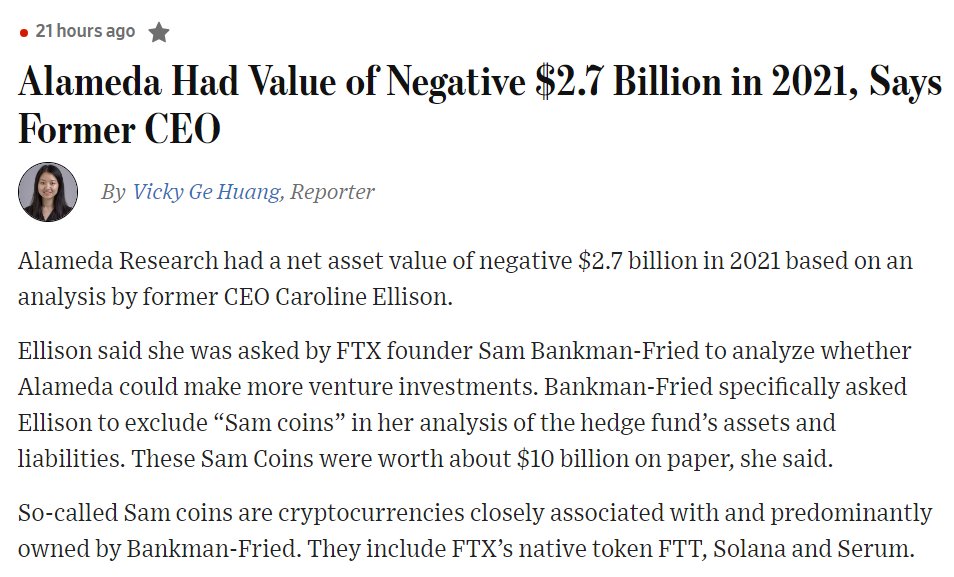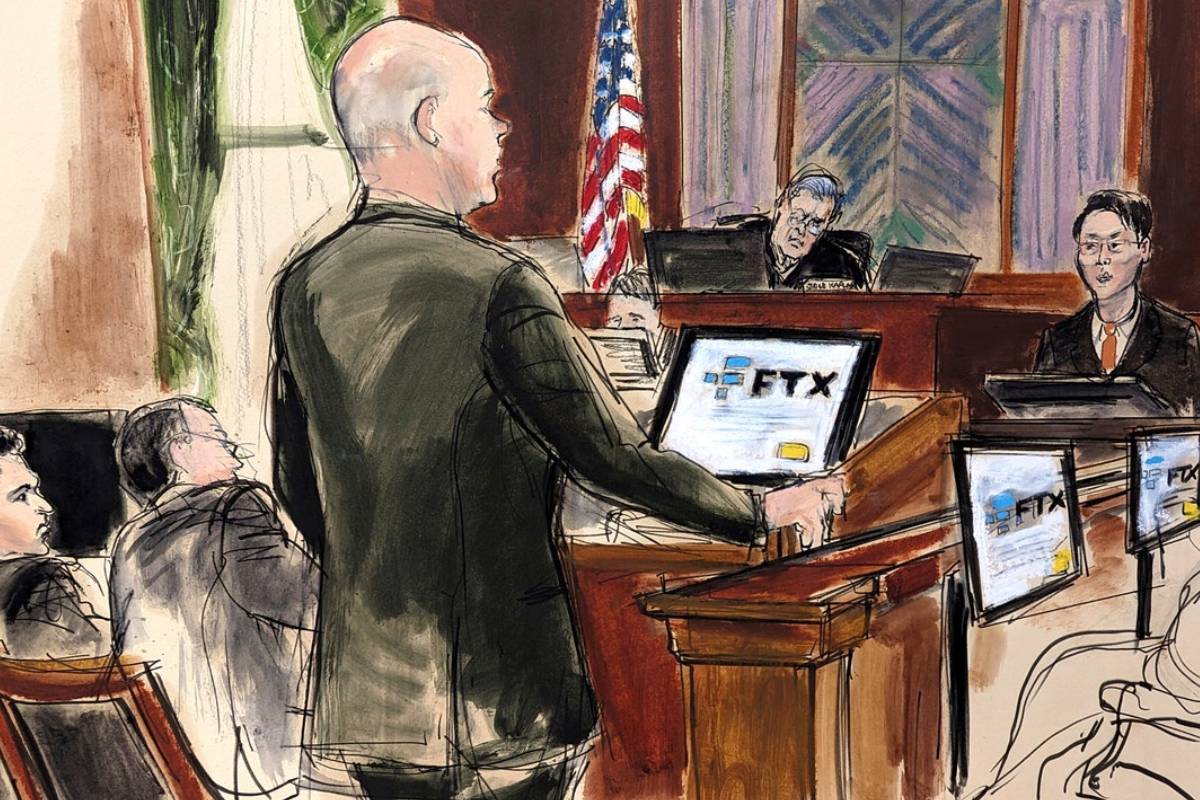The trial of Sam Bankman-Fried (SBF), once a cryptocurrency billionaire now accused of orchestrating multibillion-dollar fraud, is under way in Manhattan’s federal court.
Customers of FTX, Bankman-Fried’s collapsed crypto exchange, lost billions in dollars when the firm declared bankruptcy after an $8 billion liquidity shortfall was exposed. The court will decide whether this deficiency is fraudulent.
Now, testimonies of SBF’s closest former employees reveal government manipulation, deliberate stifling of Bitcoin’s price, and a plot to set regulators on the path to bring down Binance.
Reasonings behind Bankman-Fried’s schemes range from petty to malicious, but the results may have had seismic effects on the cryptocurrency market as a whole.

SBF’s political friends
Bankman-Fried had significant political connections and influence within the Democratic party before the downfall of his empire. His donations totalled over $45 million to political candidates and organisations in recent years, with the majority of his contributions going to Democrats, but also a substantial amount to Republicans. He actively participated in political fundraising and built a network of lobbyists to promote his interests in the crypto industry and gain influence in Washington, D.C.
The extent of his donation and subsequent benefiting is difficult to gauge. Bankman-Fried confesses to using numerous straw donations and nonprofits to mask his identity from the public.
“All my Republican donations were dark,” Admitted Bankman-Fried, “Reporters freak the f*ck out if you donate to a Republican because they’re all super liberal. And I didn’t want to have that fight, so I just made all the Republican ones dark.”
Excess and concealed donations violate US campaign financing policies, and SBF went beyond. The disgraced entrepreneur stands accused of:
- Intentionally circumventing campaign finance laws: Bankman-Fried has donated nearly $40 million in publicly disclosed contributions, but state and federal campaign finance data and nonprofit records point to undisclosed donations tying back to him.Alameda Research also donated over $12 million to SBF’s brother’s nonprofit organisation, Guarding Against Pandemics, and these funds were used to support a California ballot initiative related to pandemics. There are questions about whether the recipients knew the true source of the funds.
- Misusing corporate contributions: Campaign finance records reveal Alameda Research donated $5 million in 2020 to pro-Biden group Future Forward USA.
- Improperly using conduits to hide sources of the funds: Bankman-Fried and his associates also donated to charities and political causes championed by their family members, including Guarding Against Pandemics, and his mother’s super PAC, Mind the Gap.In the US, super PACs are allowed to receive unlimited funding from individuals, corporations, and labour unions alike. Nepotist practices, however, only add to SBF’s reputation of a schemer.
- Alleged diversion of customer funds: Billions of dollars in customer funds have allegedly been diverted from FTX to Alameda Research, where they were subsequently used for personal gains, including political contributions.
Motivated by a desire to buy bipartisan influence and impact the direction of public policy in Washington, particularly when cryptocurrency policies would be up for debate. Bankman-Fried likely sought to exert influence and advance his interests by supporting political candidates and parties, all while keeping the majority of his donations hidden from public view.
These actions have raised questions about campaign finance violations, the circumvention of contribution limits, and the use of straw donations to mask the true identity of a political donor. While the charges do not name the specific beneficiaries of the donations, the attempt to influence political decision-making is obvious.
Now, political meddling isn’t the only money-related manipulation SBF is accused of.

SBF conspired to keep Bitcoin price under $20k
During her testimony in court on 11 October, former CEO of Alameda Research and SBF’s on-and-off girlfriend, Caroline Ellison, revealed Bankman-Fried instructed her to sell Bitcoin (BTC) should its price exceed $20,000.
Sold Bitcoin was ‘borrowed’ from FTX customers’ funds, and used to purchase ‘Sam coins’.
‘Sam coins’ are cryptocurrencies largely owned by Bankman-Fried, including FTX’s own FTT, Solana, Serum, Maps, and Oxygen.
This revelation prompted many to speculate that had SBF and Ellison not sold off customer BTC during the bull market, Bitcoin could’ve reached its anticipated $100,000 price back in 2021.

The selling of Bitcoin was not authorised by customers. The result — artificial selling pressure on Bitcoin.
During the 2021 bull run, Bitcoin reached an all-time high of $69,000. However, some predictions, particularly the Stock-to-Flow (S2F) model by PlanB, had anticipated much higher prices. The S2F model projected a price target of up to $288,000 for Bitcoin during the halving cycle, with a “worst case scenario” of $135,000 by December 2021.
After Bitcoin failed to reach these ambitious price levels, both the S2F model and PlanB faced substantial public criticism.
Unfortunately, the public data of FTX and Alameda is limited. The primary available data relates to Bitcoin wallets held by FTX, which reportedly contained less than 47,000 BTC by September 2022. It’s unclear whether Alameda Research held additional Bitcoin addresses. Given their financial difficulties, it’s unlikely they had liquid reserves.
FTX’s reported spot Bitcoin volume in July 2022 was $30 billion, equivalent to an average of $1 billion per day. However, there are concerns about FTX’s data accuracy due to past data manipulation issues.
Assuming Ellison’s sales took place on FTX, a 4,000-BTC order valued at $80 million would represent only 8% of the exchange’s daily volume. Even considering broader Bitcoin volume data from major exchanges, the speculated order size by Alameda appears inconsequential.

SBF’s plot against Binance
Caroline Ellison’s testimony uncovered significant details about the inner workings of FTX and Alameda, including SBF’s intentions to sick regulators on Binance and bring the more successful competitor down.
Ellison’s testimony reveals SBF was deeply concerned about taking regulatory actions against Binance. He had actively lobbied for this outcome and even claimed to have obtained promises from regulators to target Binance. His motivation for pursuing this path was the belief that it would allow FTX to gain a larger market share. However, when regulators appeared to delay or renege on these promises, SBF grew frustrated.
At its peak, FTX was the second-largest cryptocurrency exchange globally, with Binance holding the top position. While rivalry is common in the business world, the feud between SBF and Binance’s CEO, Changpeng Zhao (CZ), was particularly intense. This rivalry was evident in public disputes and disagreements, including their interactions during FTX’s final days.
Initially, the relationship between SBF and CZ was a business partnership, with Binance making a strategic investment in FTX in 2019. However, signs of tension emerged when FTX decided to buy out Binance’s equity stake and Binance’s subsequent decision to abstain from FTX’s series B funding round in 2021.
Ellison also testified that SBF funded the buyout of Binance’s stake in FTX using $1 billion in customer deposits.
The tenuous relationship between SBF and CZ played a crucial role in FTX’s eventual collapse. CZ added to the turmoil by publicly announcing Binance’s intention to sell FTT holdings worth over $500 million. He also hinted at FTX secretly lobbying against Binance, contributing to panic about FTX’s financial stability.
In light of these revelations, the validity of legal action Binance faces due to accusations made by the US Securities and Exchange Commission (SEC) and Commodity Futures Trading Commission (CFTC) is even more questionable.

ILLUSTRATION: ELIZABETH WILLIAMS/AP
Unlimited funds, unlimited errors
The trial also heard from Gary Wang, FTX’s former chief technology officer, who pleaded guilty to wire fraud, securities fraud, and commodities fraud in December and is cooperating with the prosecution. Wang testified that, at the direction of Bankman-Fried, he helped enable Alameda to withdraw “unlimited funds” from FTX and lied about it to the public.
Adam Yedidia, a close friend of Bankman-Fried and former software developer for FTX, also testified. Yedidia allegedly discovered that Alameda Research was using FTX customer funds to pay back its creditors, ‘borrowing’ $8 billion.
To many, the implosion of FTX did not come as a surprise, in or outside of the company. A report by the Wall Street Journal suggests that employees of LedgerX, a crypto-derivatives exchange acquired by FTX, discovered a ‘back door’ in Alameda’s code, allowing the withdrawal of customer funds from FTX and carrying a negative balance of up to $65 billion. Many crypto users, too, could sense the grubbly-held rug in the hands of SBF.









